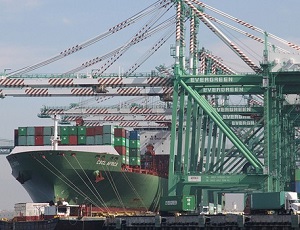Bilateral Investment Treaties: What They Are and Why They Matter
The United States and China—the world’s two largest economies—agreed at the 2013 Strategic and Economic Dialogue to restart negotiations on a bilateral investment treaty (BIT). But what are bilateral investment treaties (BIT)? Why do we need them? Who benefits from them? And how will the United States benefit from a BIT with China? Here’s what you need to know.
What is a BIT?
A BIT is an agreement between two countries that sets up “rules of the road” for foreign investment in each other’s countries. BITs give US investors better access to foreign markets—and on fairer terms. The United States currently has BITs with 42 countries.
What would a BIT do for American investors?
When countries enter into a BIT, both countries agree to provide protections for the other country’s foreign investments that they would not otherwise have. A BIT provides major benefits for American investors in another country, including national treatment, fair and equitable treatment, protection from expropriation and performance requirements for investments, and access to neutral dispute settlement. Although Chinese investments in the United States are already granted most of these rights under US law, such as the right to due process and protection from expropriation, the BIT would give Chinese investors a few additional benefits, such as access to neutral investor-state dispute settlement.
How would American investors be treated under a BIT?
A BIT ensures that foreign governments will treat American investors the same as domestic companies; this right is known as “national treatment.” BITs also guarantee that American investors are given the same types of preferences that other foreign investors are given in a market, also called “most-favored nation” treatment. Under a strong US-China BIT, the Chinese government would treat US companies the same as Chinese companies, as well as companies from New Zealand, Germany, and Korea—countries that already have investment agreements with China.
The promise of equal treatment applies to investments made prior to the time the BIT enters into force and to new investments in the market. That means that BITs bar foreign governments from using investment restrictions, like ownership caps, to prevent American companies from investing in their markets. This is particularly important in China, which currently restricts investment in more than 100 industry sectors, ranging from manufacturing to services to agriculture. By contrast, the United States restricts foreign investment outright in only five sectors, and maintains 24 mostly minor conditions or restrictions that would be removed if the United States is given reciprocity in China’s market.
Since foreign investors already have broad access to the United States’ market, a BIT would primarily serve to better protect American investors in China.
How would a BIT help protect companies from unfair government actions?
A BIT would ensure US companies would not have to meet unfair investment requirements, like licensing requirements, that Chinese companies are not required to meet. Currently, US investors often face difficulties—and at times discrimination—when applying for business licenses in China.
BITs also protect investors in several other ways. For example, BITs limit foreign governments’ ability to take over US investments in their country. If such an expropriation does happen, BITs ensure governments compensate investors in a fair and timely manner. BITs also curb a government’s ability to require that American investors meet burdensome conditions to operate in their markets. For example, under a BIT, governments cannot create rules mandating companies to use locally-made materials in their products or to transfer technology to a domestic company as a condition of investment. Finally, BITs ensure that American investors can move capital freely in and out of the country in which they have invested, as businesses do every day in the United States.
Would a BIT give US companies recourse when treated unfairly?
BITs give American investors access to a neutral, third-party arbitrator when a problem arises with another investor or the host government. This provision can be extremely helpful for investors in countries where the legal system is not mature or well-established. Notably, the dispute settlement provisions do not give foreign investors more rights than those already established in US law, thanks to America’s mature legal system, but the benefits for American investors in China would be significant.
Dispute-settlement provisions are already in place in the 42 BITs that the United States has with other countries. Only 15 disputes have been brought against the United States over a 30 year period, and the United States has won each case.
Does a BIT address intellectual property rights protection and enforcement?
BITs are tools to break down market access barriers and give American companies greater protections overseas, but they can’t address every problem that companies face abroad. For example, American companies in China face challenges in protecting and enforcing their intellectual property rights (IPR). A BIT would not fix those problems directly.
Indirectly, however, a BIT would help US companies protect their IPR in China. The BIT would remove ownership restrictions that force US companies in some sectors to partner with Chinese firms in order to invest. Without these restrictions, companies are in a better position to protect their IPR because they can own 100 percent of their operations instead of sharing their IPR with a partner.
What about government subsidies to Chinese companies and preference in government procurement? Will foreign companies be treated equally?
A BIT would not address government subsidies to Chinese companies or give equal access to government procurement markets. Those issues must be addressed under separate initiatives, either bilaterally or by getting China to join the World Trade Organization’s (WTO) Government Procurement Agreement.
A BIT would, however, bar the Chinese government from granting preferential treatment to state-owned enterprises (SOEs) and private Chinese companies. In addition, a BIT would obligate SOEs to treat US investors fairly. This requirement would help protect US companies in China from unfair treatment, as some SOEs are given authority to regulate aspects of an industry (de facto or formally), even though they act as a commercial competitor in that industry. In these situations, the BIT would ensure that US companies’ competitors do not have the ability to regulate in their own favor.
A BIT cannot address all SOE-related issues, like the share of dividends paid out or governance structure. These can and should be addressed through appropriate channels that compliment a BIT. However, there is no reason not to conclude a BIT with China, even if those issues are currently outside of the BIT’s scope.
Finally, it’s important to remember that the Obama administration spent three years revising the US “Model BIT,” which is used as a basis from which the US negotiates its BIT agreements. In that process, the United States made important modifications that effectively address concerns about SOEs, among other issues.
What is the process for approving a BIT in the United States?
At the time of writing, the United States and China are in the early stages of negotiating the BIT. When the BIT text is final and ready for government consideration, the treaty will be submitted to the Senate and referred to the Committee on Foreign Relations. Once considered, the Committee may report the treaty to the full Senate favorably, unfavorably, give no recommendation, or choose not to act it at all. When a treaty has been reported to the Senate, it will be added to the Executive Calendar and considered in executive session. Two-thirds of the Senate must vote in favor of the BIT, via a resolution of ratification, in order for it to pass.
China Business Review is the official magazine of the US-China Business Council, a non-profit and non-partisan trade association that represents roughly 230 American companies doing business in China. Stephanie Henry (shenry@uschina.org) is manager of government affairs at the US-China Business Council’s Washington, DC office.
Asia Briefing Ltd. is a subsidiary of Dezan Shira & Associates. Dezan Shira is a specialist foreign direct investment practice, providing corporate establishment, business advisory, tax advisory and compliance, accounting, payroll, due diligence and financial review services to multinationals investing in China, Hong Kong, India, Vietnam, Singapore and the rest of ASEAN. For further information, please email china@dezshira.com or visit www.dezshira.com.
Stay up to date with the latest business and investment trends in Asia by subscribing to our complimentary update service featuring news, commentary and regulatory insight.
Related Reading
 An Introduction to Tax Treaties Throughout Asia
An Introduction to Tax Treaties Throughout Asia
In this issue of Asia Briefing Magazine, we take a look at the various types of trade and tax treaties that exist between Asian nations. These include bilateral investment treaties, double tax treaties and free trade agreements – all of which directly affect businesses operating in Asia.
 Revisiting the Shanghai Free Trade Zone: A Year of Reforms
Revisiting the Shanghai Free Trade Zone: A Year of Reforms
In this issue of China Briefing, we revisit the Shanghai FTZ and its preferential environment for foreign investment. In the first three articles, we highlight the many changes that have been introduced in the Zone’s first year of operations, including the 2014 Revised Negative List, as well as new measures relating to alternative dispute resolution, cash pooling, and logistics. Lastly, we include a case study of a foreign company successfully utilizing the Shanghai FTZ to access the Outbound Tourism Industry.
 Adapting Your China WFOE to Service China’s Consumers
Adapting Your China WFOE to Service China’s Consumers
In this issue of China Briefing Magazine, we look at the challenges posed to manufacturers amidst China’s rising labor costs and stricter environmental regulations. Manufacturing WFOEs in China should adapt by expanding their business scope to include distribution and determine suitable supply chain solutions. In this regard, we will take a look at the opportunities in China’s domestic consumer market and forecast the sectors that are set to boom in the coming years.
- Previous Article Jing-Jin-Ji-Wirtschaftszone: Ein neues Dreigespann
- Next Article Fall Ultrasonic: Wie Sie Ihr Unternehmen in China in den Griff bekommen




















 By Stephanie Henry, US-China Business Council
By Stephanie Henry, US-China Business Council












